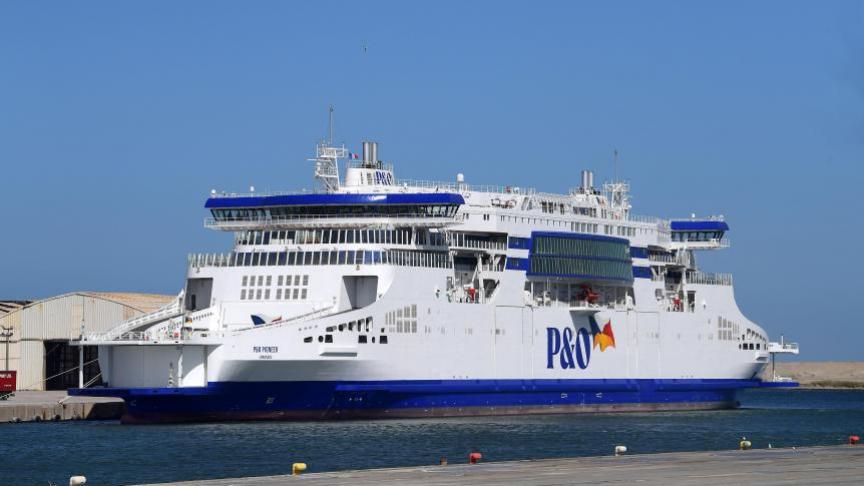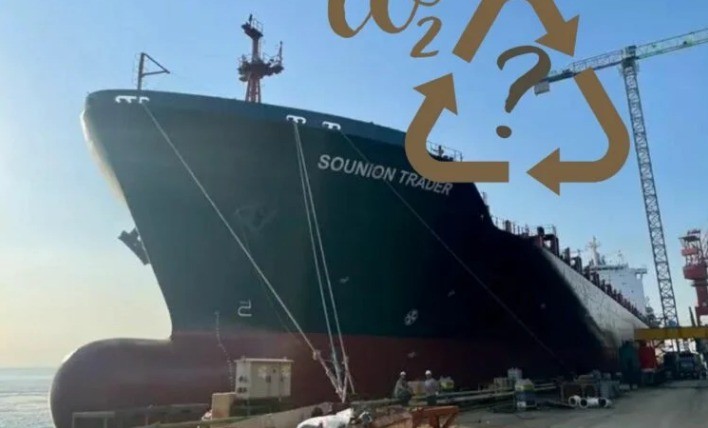Channel companies and ports committed a year ago to creating a green corridor by 2030 where maritime transport would be carbon neutral, using battery-powered ferries.
The huge ferries exhaling their exhaust fumes during U-turns between two crossings of the Channel will soon be nothing more than a memory: companies are preparing for the total electrification of this maritime corridor by putting their first hybrid ships into service .
After the first diesel-electric powered ferry, Pioneer, which has been running since June 2023 between Calais and Dover, the British company P&O launched its twin, Liberté, on Tuesday. Half of its fleet is now hybrid.
Another company serving Great Britain, the Danish DFDS, plans to deploy a fleet of electric propulsion ships by 2030. And the third, Irish Ferries, will also have to get involved.
Channel companies and ports in fact committed a year ago to creating a green corridor by 2030 where maritime transport would be carbon neutral, using battery-powered ferries, with charging facilities in the ports. Objective: to give “a boost to achieving the objective of decarbonization of the global maritime sector” indicates DFDS.
“Reducing CO2 emissions is an ecological necessity, but it will also be economically necessary” with the drastic increase in the carbon tax by 2026, explains the director of the port of Boulogne-Calais, Benoît Rochet.
Giant electrical outlets
The Channel, through which a third of trade between the United Kingdom and the European Union passes, is a route as busy as it is short: less than 50 km separate the two coasts, facilitating a transition to 100% electric ferries because this requires limited autonomy.
P&O estimates that its new ferries consume up to 40% less fuel, due to their hybrid engine, but also their design avoiding U-turns. Symmetrical, they have two pilot cabins, and the crew moves from one to the other on each crossing, thus saving time and fuel.
For its part, DFDS plans to “build six low-carbon ships, including two in the Calais Strait which will operate on electricity,” explains Mathieu Girardin, in charge of the ferry activity of the Danish company.
But new generation P&O ships, designed to eventually sail 100% on electricity, currently operate in a hybrid manner, using electricity and a diesel generator to sail, because ports are not yet equipped to recharge the batteries quickly enough.
To do this, they must install giant sockets of several tens of megawatts. That of Calais intends to install six 20 MW sockets in the coming years, making 120 MW available – forty times more than what the port currently consumes during peak periods.
Very important work
Another issue: supplying ports with electricity. Calais-Boulogne prides itself on a major “geographical asset”: the proximity of the Gravelines nuclear power plant, the largest in Western Europe. The French electricity network manager RTE is working on the delivery of 225,000 volts to the port.
Dover, on the other hand, does not have this advantage and will have to plan very significant work to create very high voltage lines. In addition to the Channel, other short and busy routes, such as the Strait of Gibraltar, are expected to become green corridors, as part of the Clydebank declaration signed at COP26. But decarbonizing maritime transport over longer distances remains complex.
“It’s starting to bubble up with the Olympic Games, we have river transport which is electrifying, but on marine vessels we don’t have much,” explains Pierre-Michel Guilcher, researcher in naval hydrodynamics at ENSTA Bretagne, engineering school specializing in maritime and defense.
For good reason: diesel provides 25 times more energy per kilo transported: “12.6 kw/kg compared to 0.2 kw/kg for a kilo of lithium-ion battery” he emphasizes. To generalize electric power over long distances, “significant innovations” or “creation of hybrid sailboat and electric systems” would be required.
Other technologies exist, such as propulsion systems based on ammonia and methanol, but the road remains long to find reliable alternatives to hydrocarbons.




